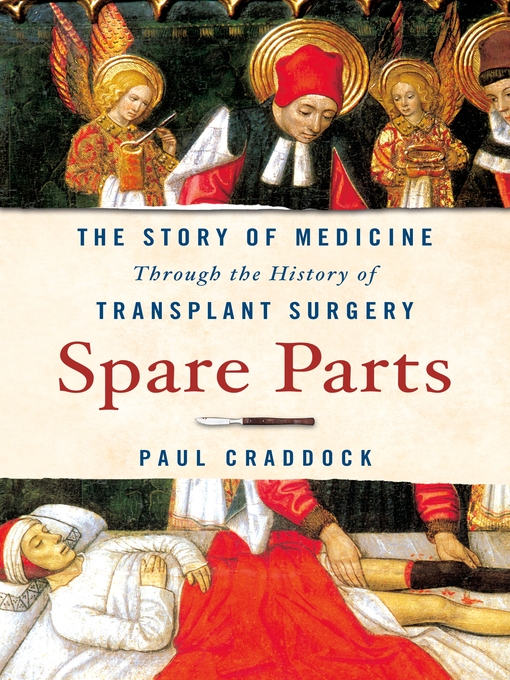Paul Craddock's Spare Parts offers an original look at the history of medicine itself through the rich, compelling, and delightfully macabre story of transplant surgery from ancient times to the present day.
How did an architect help pioneer blood transfusion in the 1660's?
Why did eighteenth-century dentists buy the live teeth of poor children?
And what role did a sausage skin and an enamel bath play in making kidney transplants a reality?
We think of transplant surgery as one of the medical wonders of the modern world. But transplant surgery is as ancient as the pyramids, with a history more surprising than we might expect. Paul Craddock takes us on a journey - from sixteenth-century skin grafting to contemporary stem cell transplants - uncovering stories of operations performed by unexpected people in unexpected places. Bringing together philosophy, science and cultural history, Spare Parts explores how transplant surgery constantly tested the boundaries between human, animal, and machine, and continues to do so today.
Witty, entertaining, and illuminating, Spare Parts shows us that the history - and future - of transplant surgery is tied up with questions about not only who we are, but also what we are, and what we might become.
- Available now
- New eBook additions
- New kids additions
- New teen additions
- Most popular
- Try something different
- See all ebooks collections
- New audiobook additions
- Available now
- Always Available Audiobooks
- New kids additions
- New teen additions
- Most popular
- Try something different
- See all audiobooks collections
- Always Available--Everyone Reads Collection for Adults
- Always Available Classics for All Ages
- Spanish Collection
- Chinese Collection
- Marvel Comics
- Library & Information Science Professional Development Resources
- Author Interviews!
- See all featured collections collections



